Stuttgart narrowly avoided relegation from the Bundesliga last season, finishing in 16th place. The former five-time German champions beat Hamburger SV over a two-leg playoff, 6-1, to ensure they would compete in Germany’s top flight for this 2023/24 campaign. Despite the disappointing campaign last season, one positive aspect proved to be the acquisition of forward Serhou Guirassy.
Guirassy arrived at the Swabians on loan from Ligue 1 side Rennes in September 2022. The move became permanent at the end of May 2023, with the Guinea international penning a three-year deal. Guirassy finished the 2022/23 season with 14 goals, including 11 in the league, and as the club’s top scorer, was therefore pivotal to Stuttgart’s survival.
His goal return attracted the eye of some top clubs across the continent during the summer. Premier League outfits such as Newcastle, Fulham, and Nottingham Forest were all rumoured to have shown an interest, as well as the Dutch side Ajax. However, the alleged €15 million release clause in Guirassy’s Stuttgart contract was not activated; Guirassy reportedly turned down the opportunity to join Fulham late in the transfer window. The Swabians are reaping the rewards of Guirassy’s commitment this season, as he is currently the division’s top scorer with five goals in three matches.
In this Sebastian Hoeneß tactical analysis and scout report, we will analyse how Guirassy got off to a slow start at Stuttgart and how the appointment of current manager Sebastian Hoeneß has led to a higher goal return.
This analysis will detail the tactics deployed by Hoeneß to identify how they differ from his predecessors and how they subsequently complement Guirassy’s strengths.
Lack of consistency at the start
Life at Stuttgart was chaotic behind the scenes during the 2022/23 season. A revolving door was in the dugout as four managers, including interim boss Michael Wimmer, took the helm during the campaign. During the earlier stages of last season, Guirassy lacked firepower upfront under Pellegrino Matarazzo and Wimmer. His form did improve under the third appointment, Bruno Labbadia. However, he rarely featured under the German due to an injury he sustained early on in the Labbadia reign.
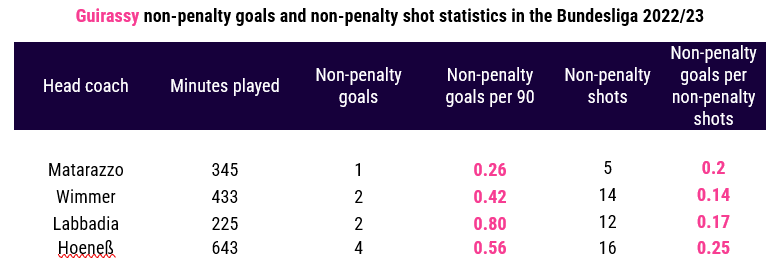
The table shows that Guirassy’s goal return per 90 minutes was at its lowest under Matarazzo and that he was less clinical under Wimmer. Matarazzo started last season with a 3-5-2 formation, and Guirassy scored a penalty in his first full start for Stuttgart in the 2-2 draw away at Bayern Munich. Matarazzo seemed indecisive as in the initial 3-5-2 formation, he first partnered Guirassy with Tiago Tomás and later with Silas Katompa. The American then experimented with 4-3-3 and 3-1-4-2 formations. The tactical indecisiveness translated to poor performances on the pitch from Stuttgart.
A strength of Guirassy’s is to hold the ball up to link up with the midfield to progress the attack forward. However, during the Matarazzo era, the 27-year-old looked like he was lacking in confidence.
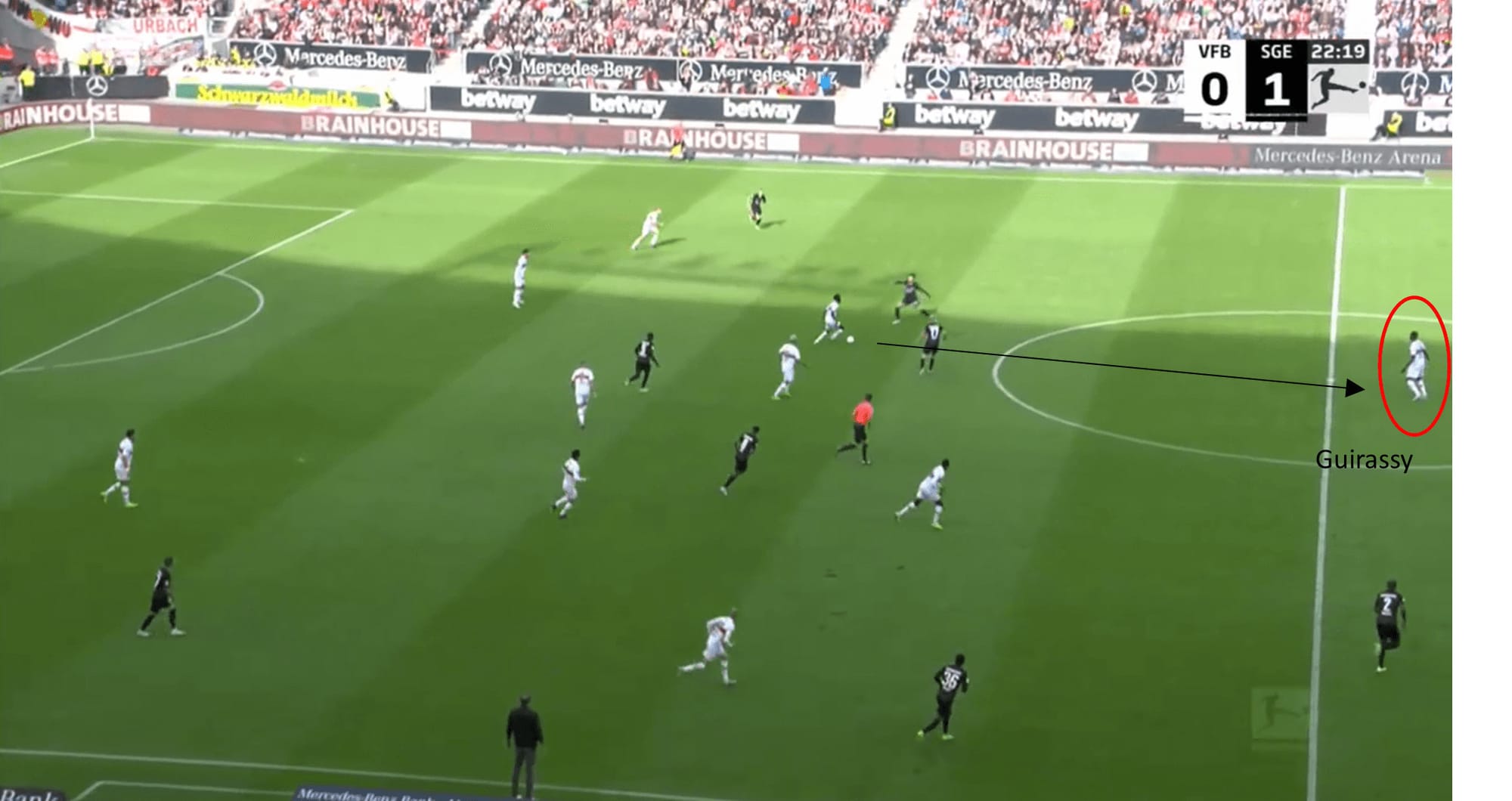
In the graphic above, the ball is played into Guirassy, who has his back to goal. The idea would be to play a one-two with the advancing midfielder.
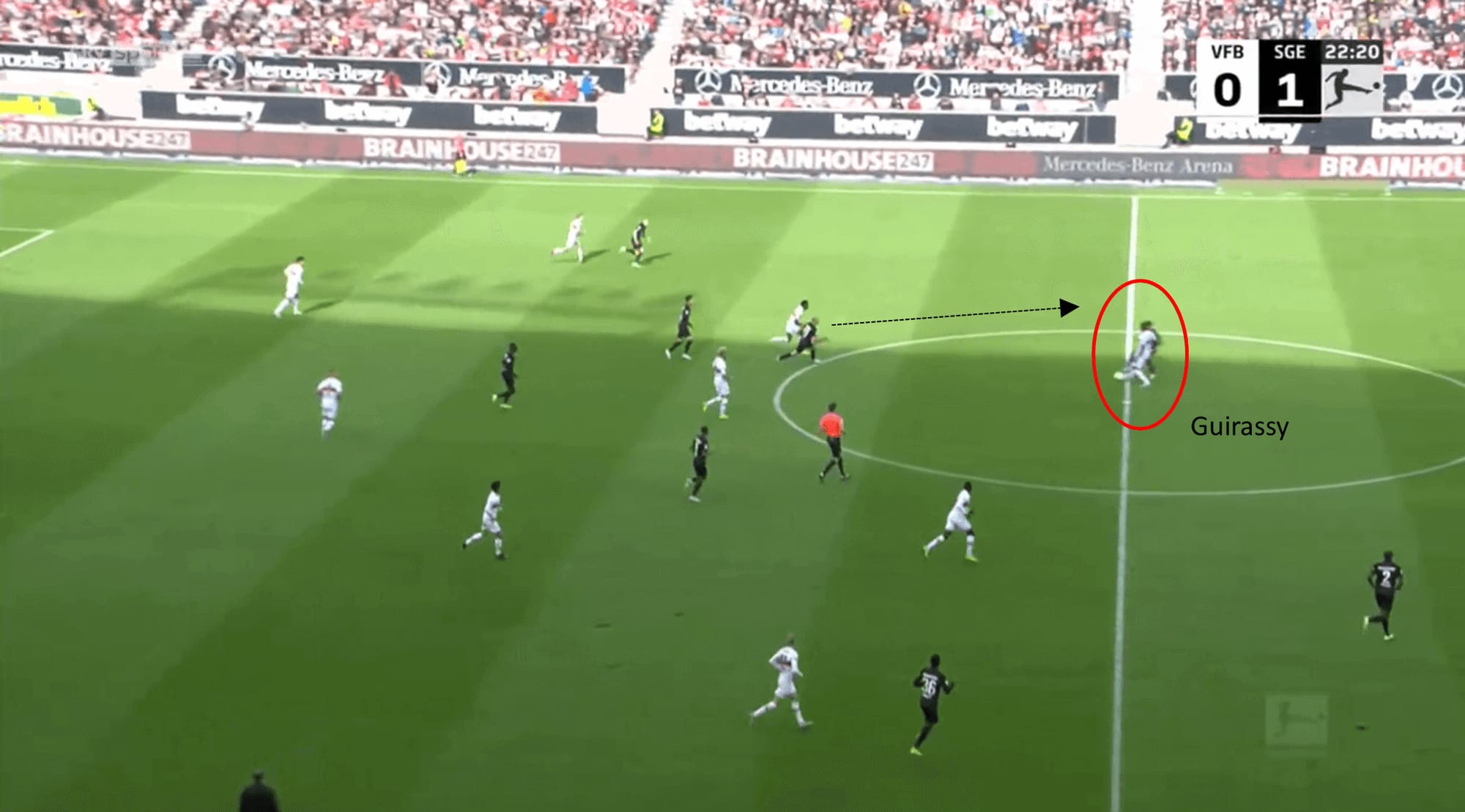
However, Guirassy is dispossessed by the opposition defender. The attacking movement into the opposition half then never progressed.
Following the dismissal of Matarazzo in October 2022, Wimmer took interim charge and ensured that the chaos off the pitch transcended onto the pitch. He started with five different formations in the six Bundesliga matches he oversaw. This period also saw another new strike partnership for Guirassy in Luca Pfeiffer.
A lack of a consistent approach tactically would likely have impacted the performances on the pitch. Although there was a lack of consistent formation, Guirassy did improve in front of goal under Wimmer.
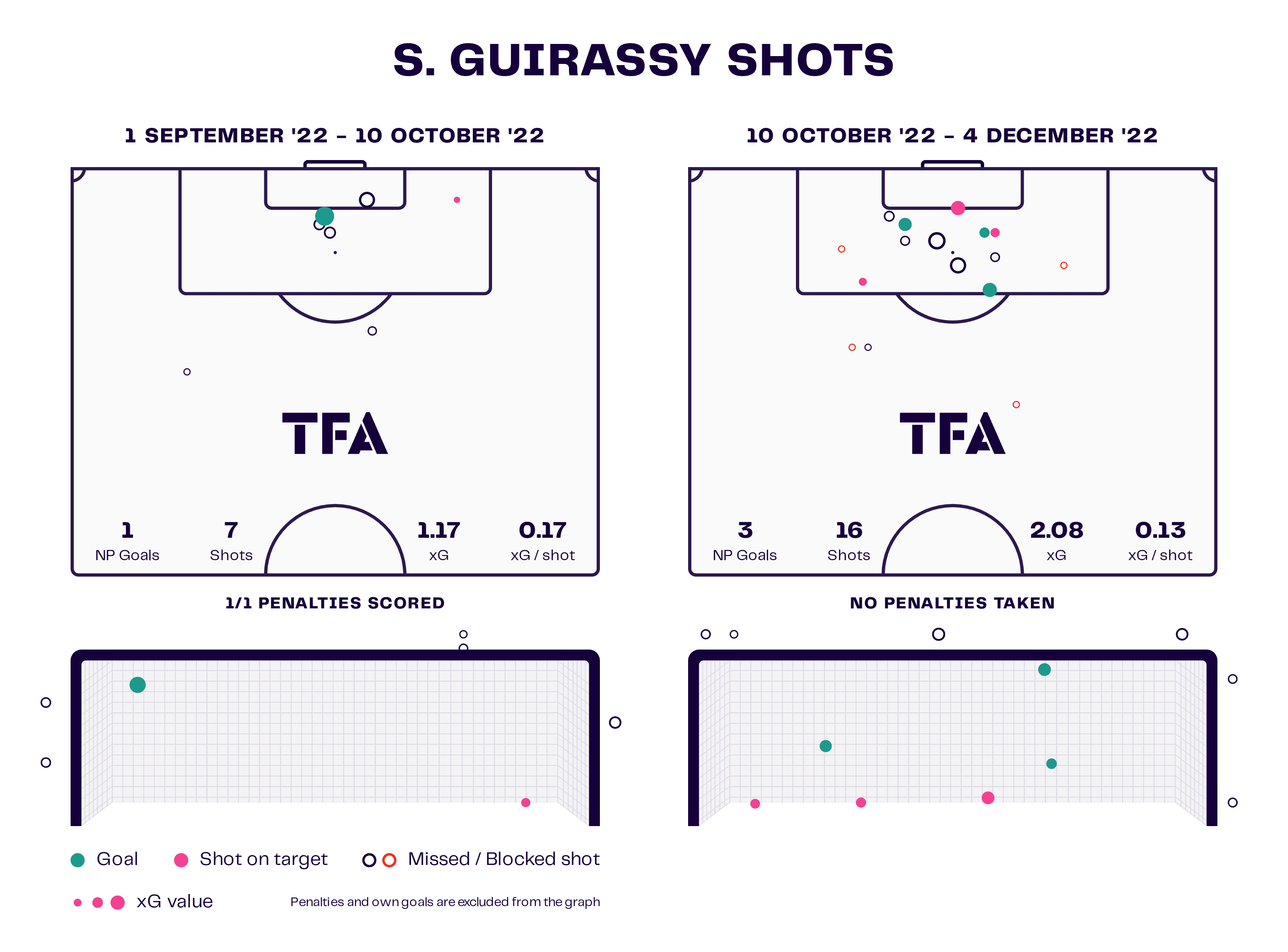
The graphic shows that during Wimmer’s spell in charge, Guirassy had more opportunities at goal in all competitions. His finishes under both Matarazzo and Wimmer came from inside the area, suggesting Guirassy is potent if he can get on the end of crosses or layoffs in the box.
Guirassy cut a frustrated figure in the initial stages of last season.
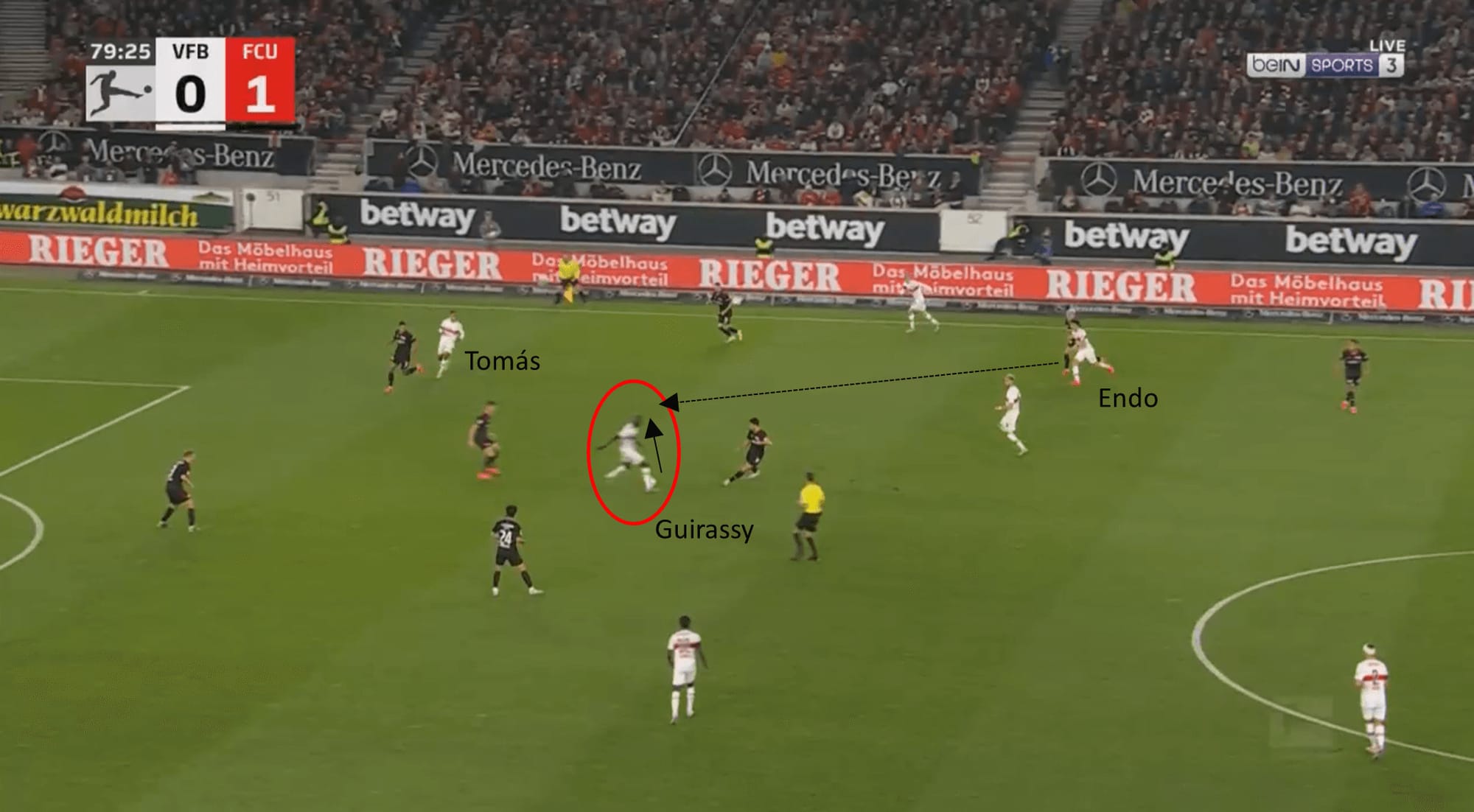
In the above match still, Guirassy positioned himself deeper to play a one-two as the ball came in from the right-hand side.
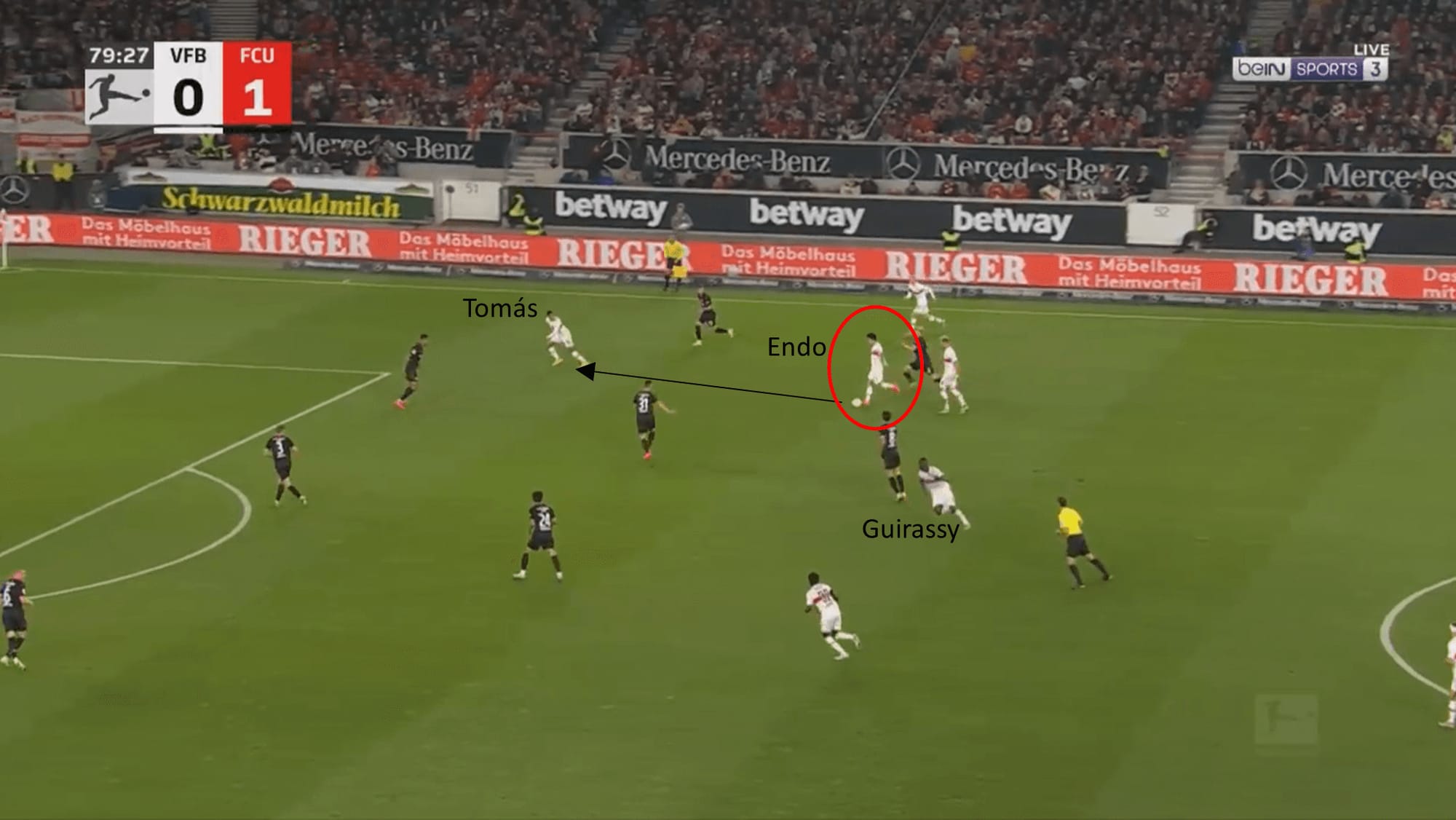
Upon completing his pass, Guirassy quickly turns and advances towards the penalty area as the ball is played out to the right.
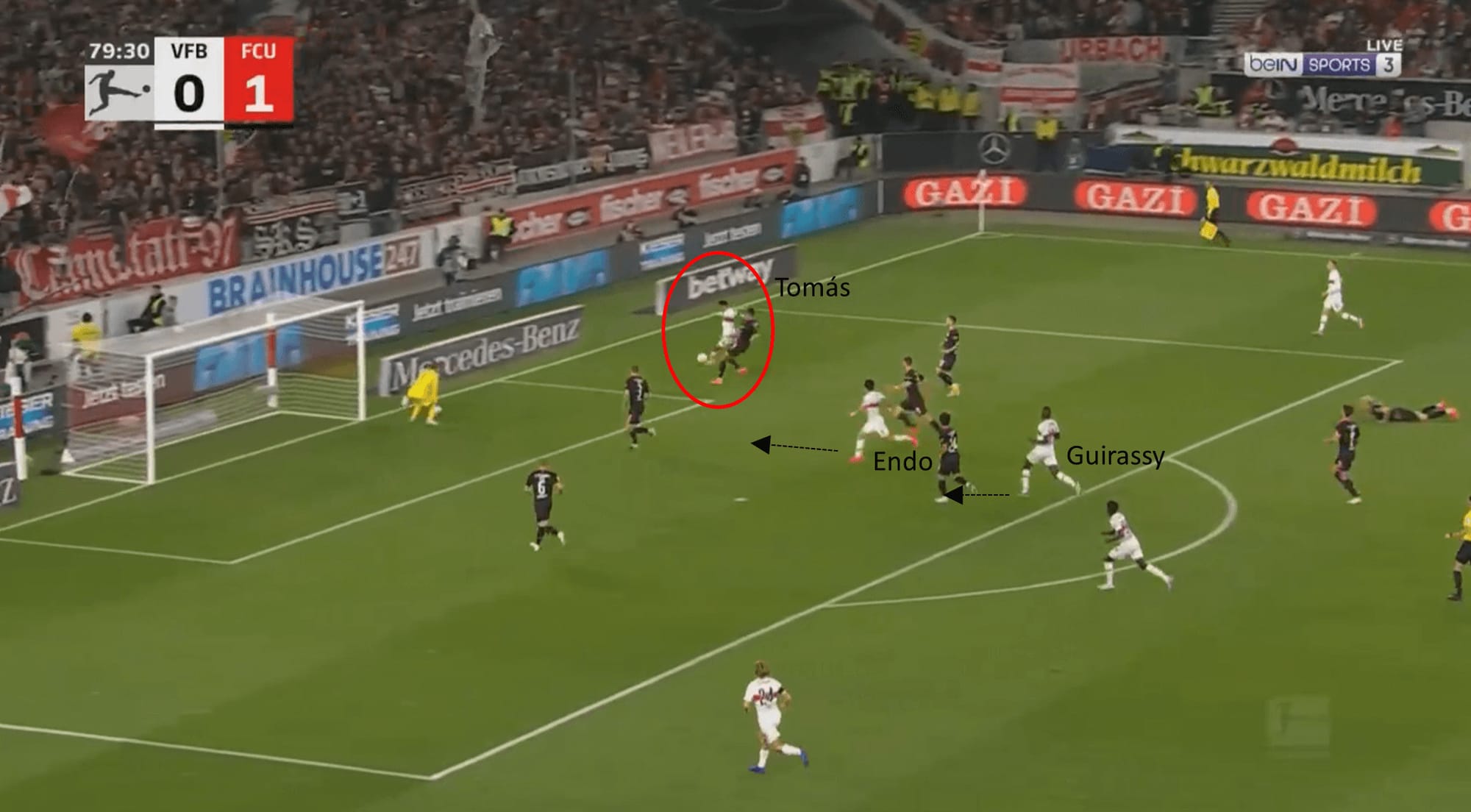
Despite the runs into the area by Guirassy and Endo, Tomás opts for a shot rather than looking to play the ball across the penalty box. This represented a poor decision as the angle out wide was too tricky. The resultant effort on goal hit the side netting, not troubling the goalkeeper.
Stuttgart’s attacking third movement looked disjointed in the early stages of last season.
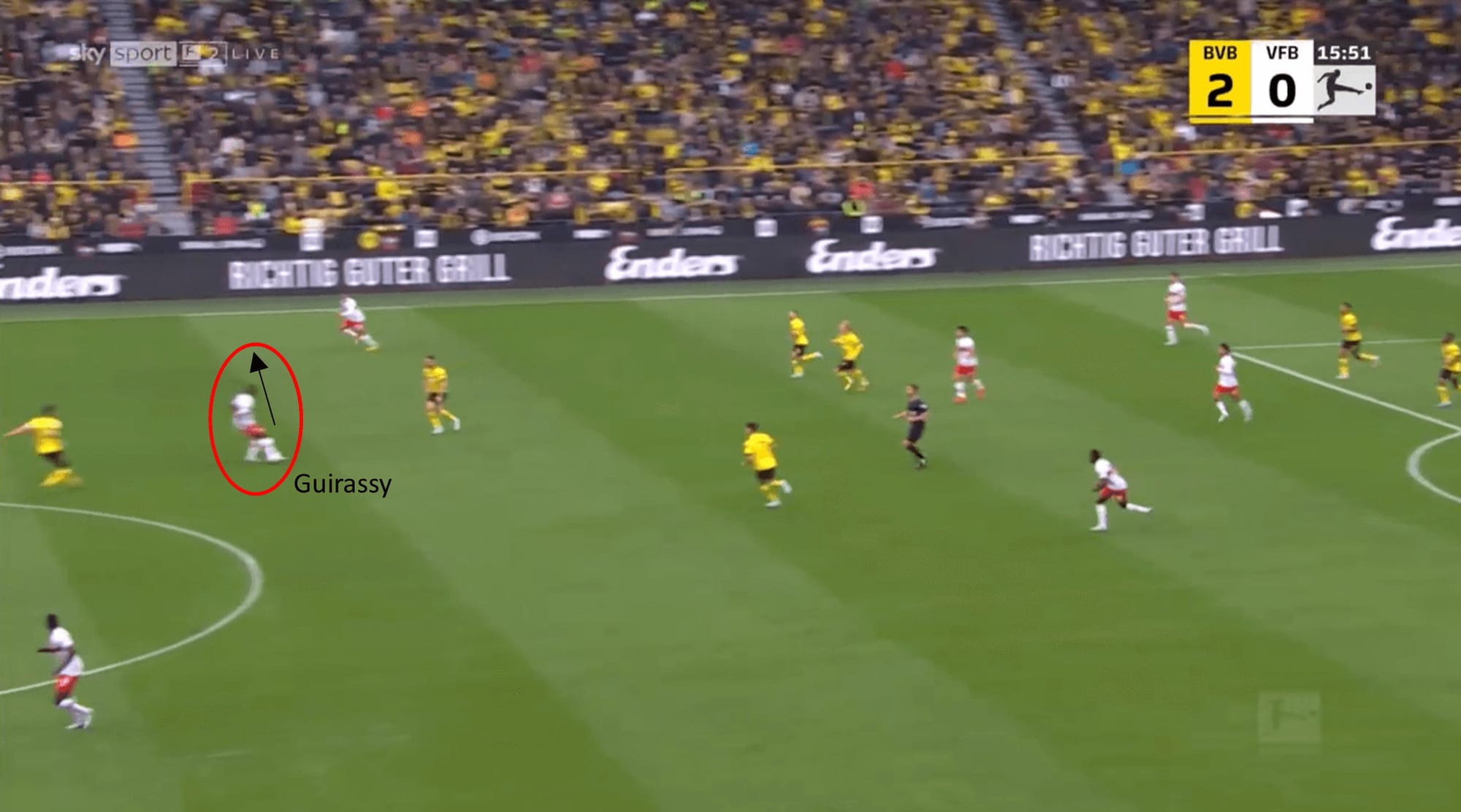
In the match against Borussia Dortmund, Guirassy plays a square ball to the right-hand side noticeably, though Guirassy has had to come deep inside his own half to be able to aid Stuttgart going forward.
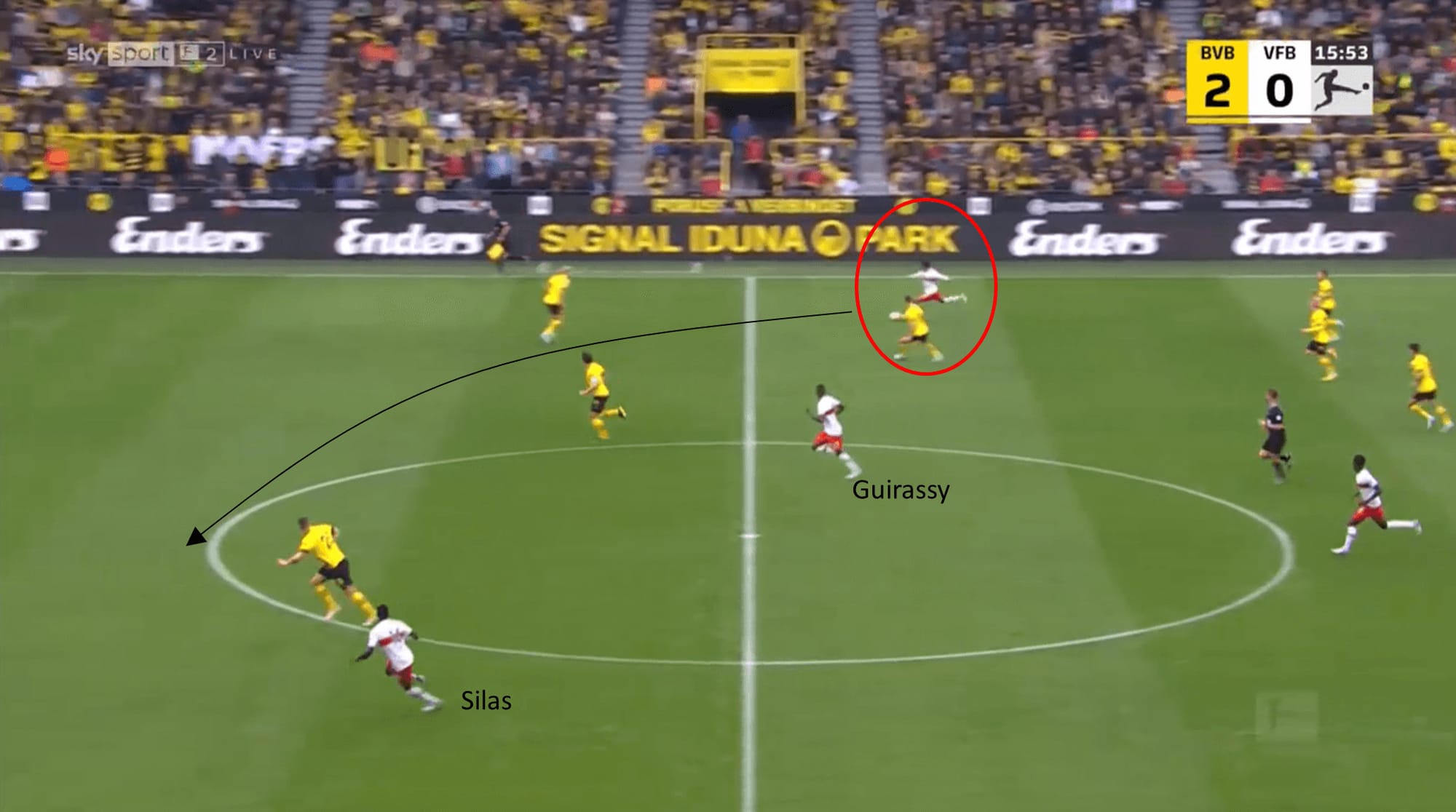
The ball is switched to the left to the most advanced attacking player, Silas, but the ball is poor. Dortmund subsequently regained possession. It is evident from the graphics that the attacking front three were considerable distances apart, and the poor link-up play suggests there was a lack of cohesion going forward.
Guirassy improved his goal per 90-minute statistics when Labbadia took charge in December 2022.
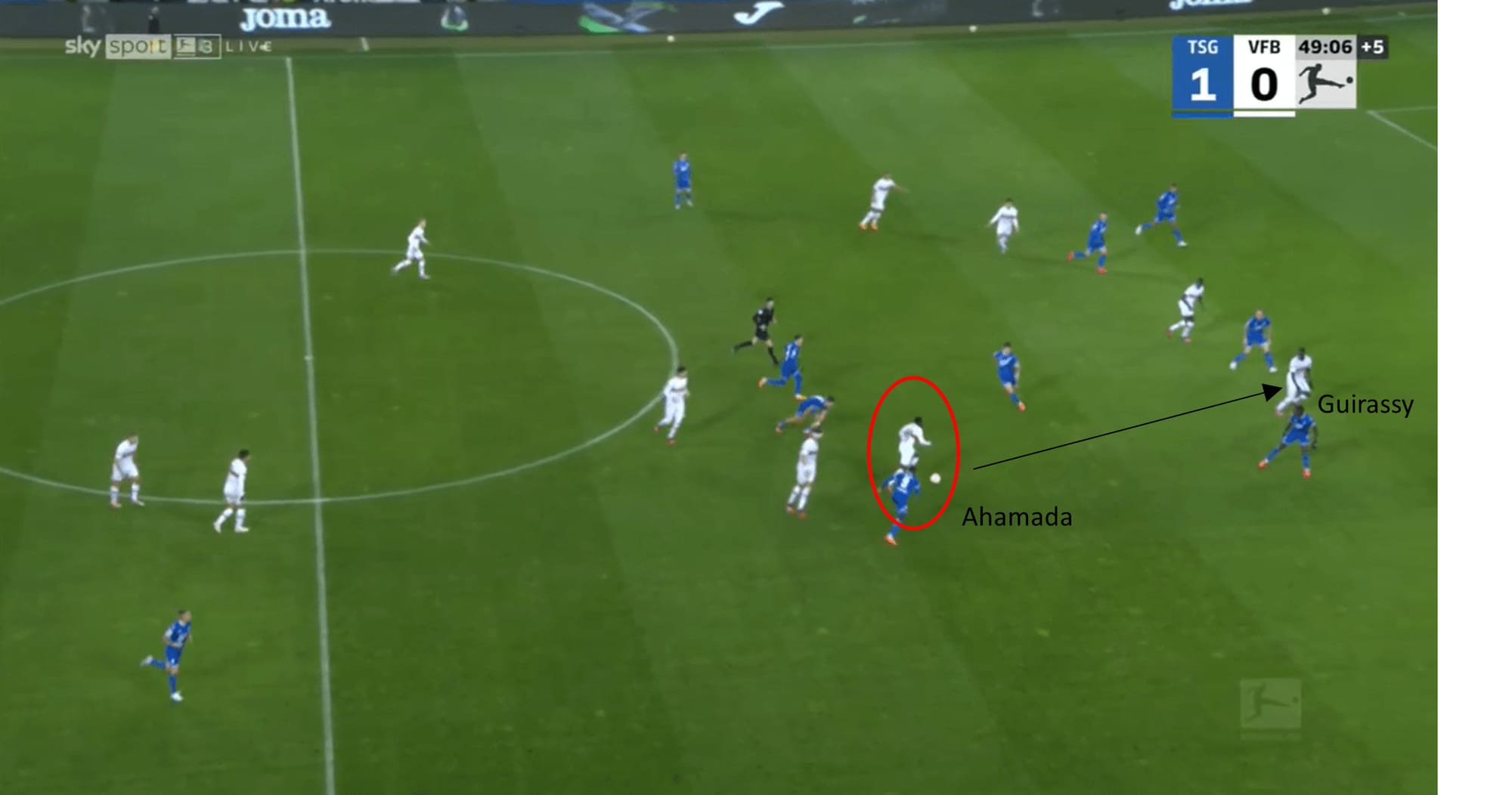
It is shown here that the forward beat the offside trap and got on the end of a through ball by Ahamada. Upon receipt of the ball, he pressed towards the opposition goal and eventually scored. Such play is indicative of Guirassy’s intelligence as he looks to make runs in behind the defence.
Furthermore, Guirassy scored a stoppage-time header during Labbadia’s time at the Swabians in the DFB-Pokal against Paderborn. His aerial play is particularly strong as he ranked highly, in the 96th percentile, across the top division forwards last season for percentage of aerial duels won. This impressive statistic isn’t too surprising, given his 6ft 2in build.
The frustrating injury that the Guinea international picked up in February 2023 would have left Stuttgart fans thinking what might have been had he been fit enough for selection under Labbadia, unlike his predecessors. Labbadia was insistent on a 4-3-3 formation, and Guirassy may have thrived, playing with more wide players in support to provide crosses.
However, it was recognised that Stuttgart didn’t have the personnel to accommodate the German’s tactics. This ultimately led to Labbadia’s sacking, and Hoeneß replaced him. The arrival of Hoeneß coincided with Guirassy returning to full fitness, and it was under the young German that Guirassy found his clinical touch.
Finishing the season with a flourish
Hoeneß took charge of the last eight league games last season, winning three and drawing four. During this period, Guirassy scored five times, including one penalty, and four of those goals came in consecutive matches.

The graphic shows that in all competitions, in the latter stages of last season, Guirassy was creating more clear-cut chances. Furthermore, he scored more than expected, indicating greater confidence in front of goal. The majority of his goals came in the six-yard box, again suggesting his potency at getting on the end of crosses. Whilst he didn’t score from outside the box during this time, he did have more attempts on goal outside the box and was able to hit the target with such efforts.
Hoeneß favoured a 3-4-3 formation when he arrived at the MHPArena. Stuttgart played expansive football, as they were good on the break, and the forward players were flexible in their attacking play.
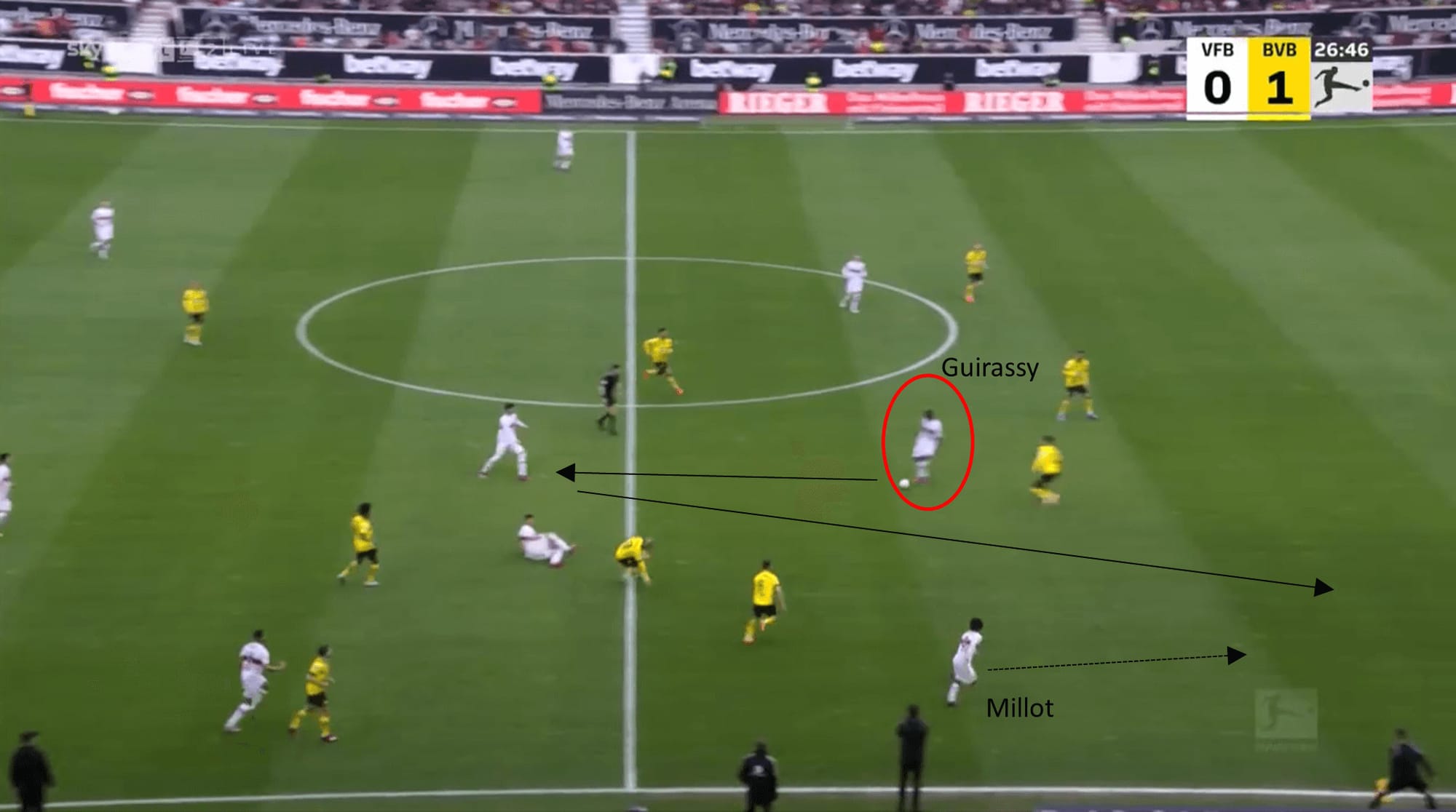
Unlike at the beginning of the campaign, Guirassy is receiving the ball in a much more advanced position near the final third. He lays the ball off to the midfielder, who can immediately play a progressive pass towards the right channel for the advancing Millot to run onto.
Stuttgart appeared more fluid and less disjointed upon Hoeneß’s arrival. With playing three up front, including Guirassy, and two narrow number 10s, Stuttgart could advance their wing-backs to provide more of an attacking outlet. Therefore, this complemented Guirassy more as the German outfit was less rigid in their play.
Hoeneß wasn’t, however, as strict in his formation choice as his predecessor, Labbadia. In the 2-1 victory over Borussia Mönchengladbach, the German opted for a 5-3-2 formation.
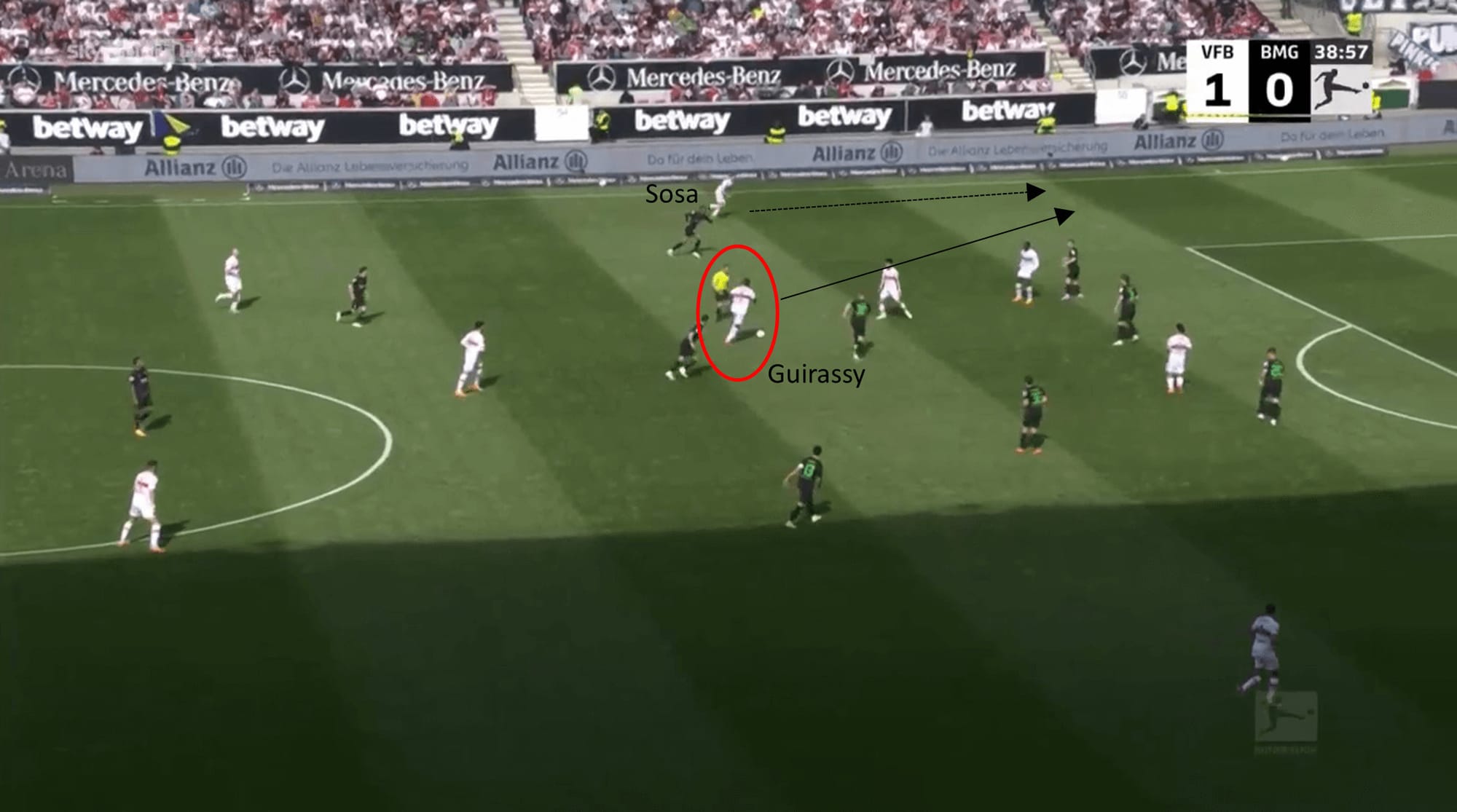
Like the previous example, Guirassy receives the ball in an advanced position near the attacking third. He quickly distributes it to the left to the wing-back, Sosa, who is playing much more offensively now.
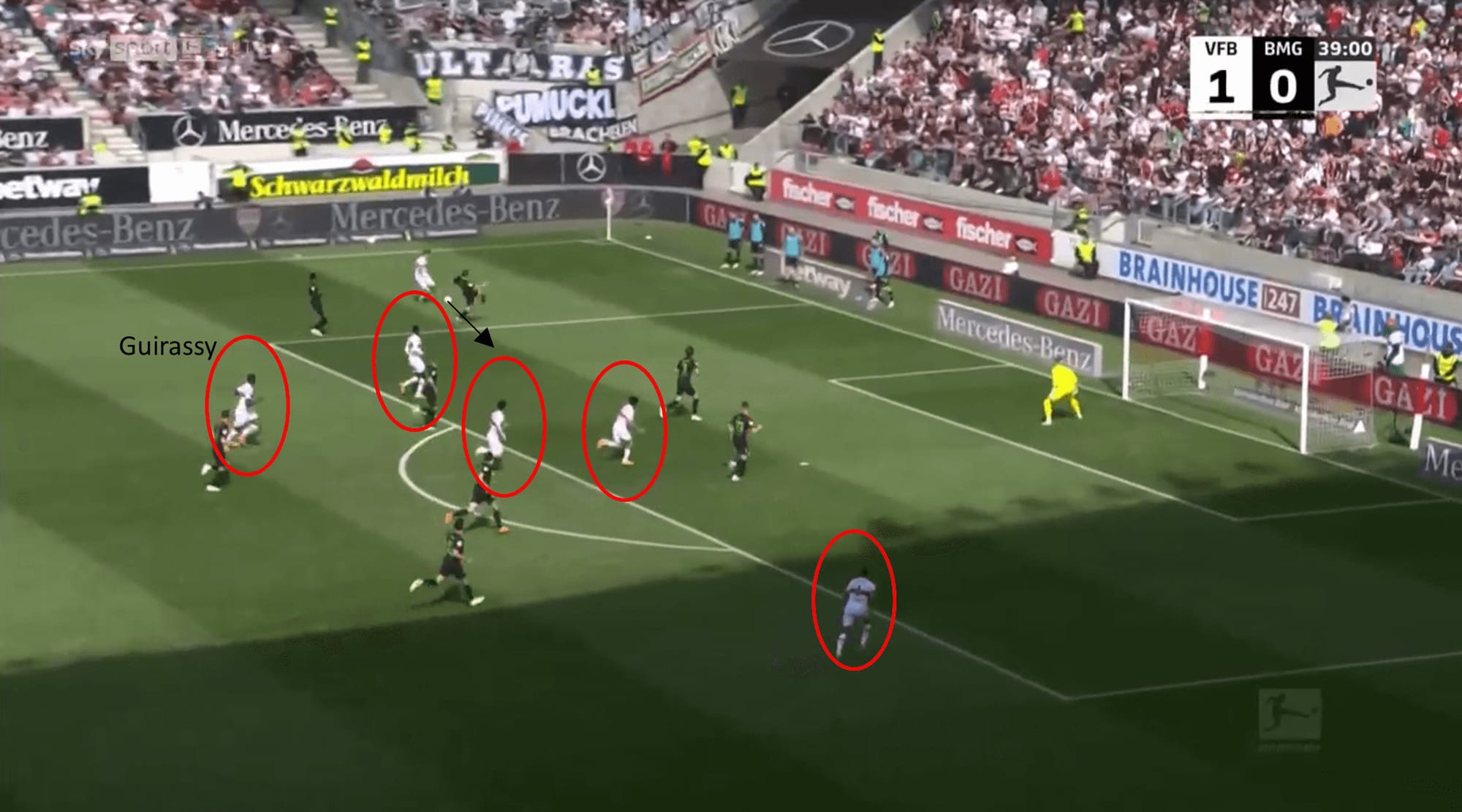
The adopted 5-3-2 formation facilitated a more counter-attacking style. It is noticeable here that once Guirassy played his pass, he quickly turned, advanced towards the penalty area, and, importantly, was one of five Stuttgart players advancing to get on the end of the cross.
Reaching new levels this season
In stark contrast to the 2022/23 campaign, the Swabians have been consistent in their formation so far this season. Hoeneß has altered tactics to the 4-2-3-1 formation. Guirassy is thriving in this formation, as he is scoring 1.79 non-penalty goals per 90 minutes. This is a much higher rate than he managed throughout the various managerial changes last season.
His confidence continues to grow in the Bundesliga this time out.
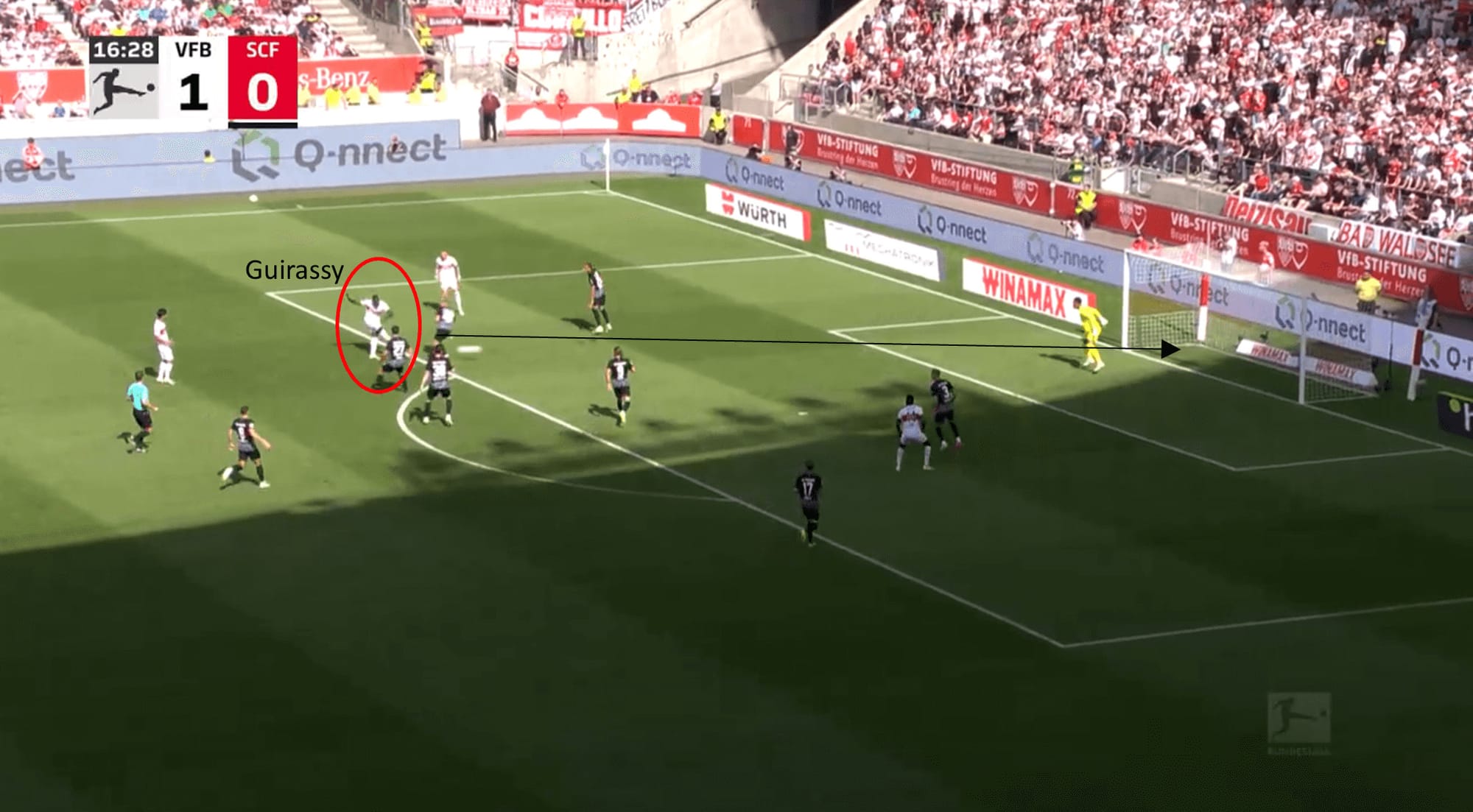
In the recent 5-0 victory over Freiburg, for Guirassy’s first of two goals, he received the ball on the edge of the area. The 27-year-old was able to show composure on the ball and turn, relieving pressure from the nearby opposition defender and getting a shot away. His effort found the back of the net and had an expected goal value of just 0.04. This highlights how Guirassy was able to dispatch a difficult shot, further exemplifying his confidence as well as showing his technical ability.
The signing of South Korea international Jeong Woo-Yeong to play in the no.10 role has enabled an extra man in attack for Guirassy to link up with. This was also evident against Freiburg.
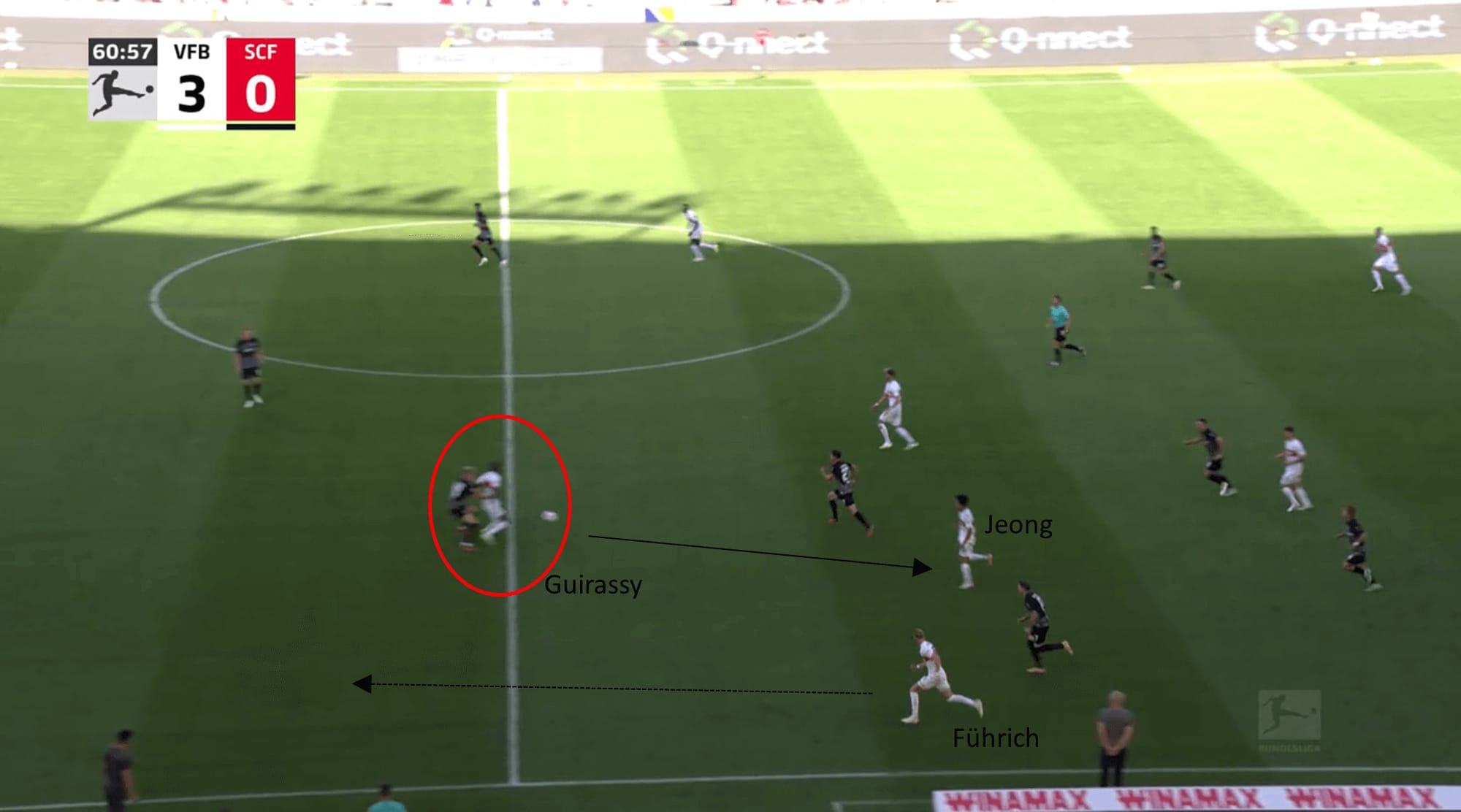
The image shows that Guirassy came deep to collect the ball, enticing the opposition defender to follow. Guirassy then used his strength to hold off the defender and play a simple pass back to Woo-yeong.
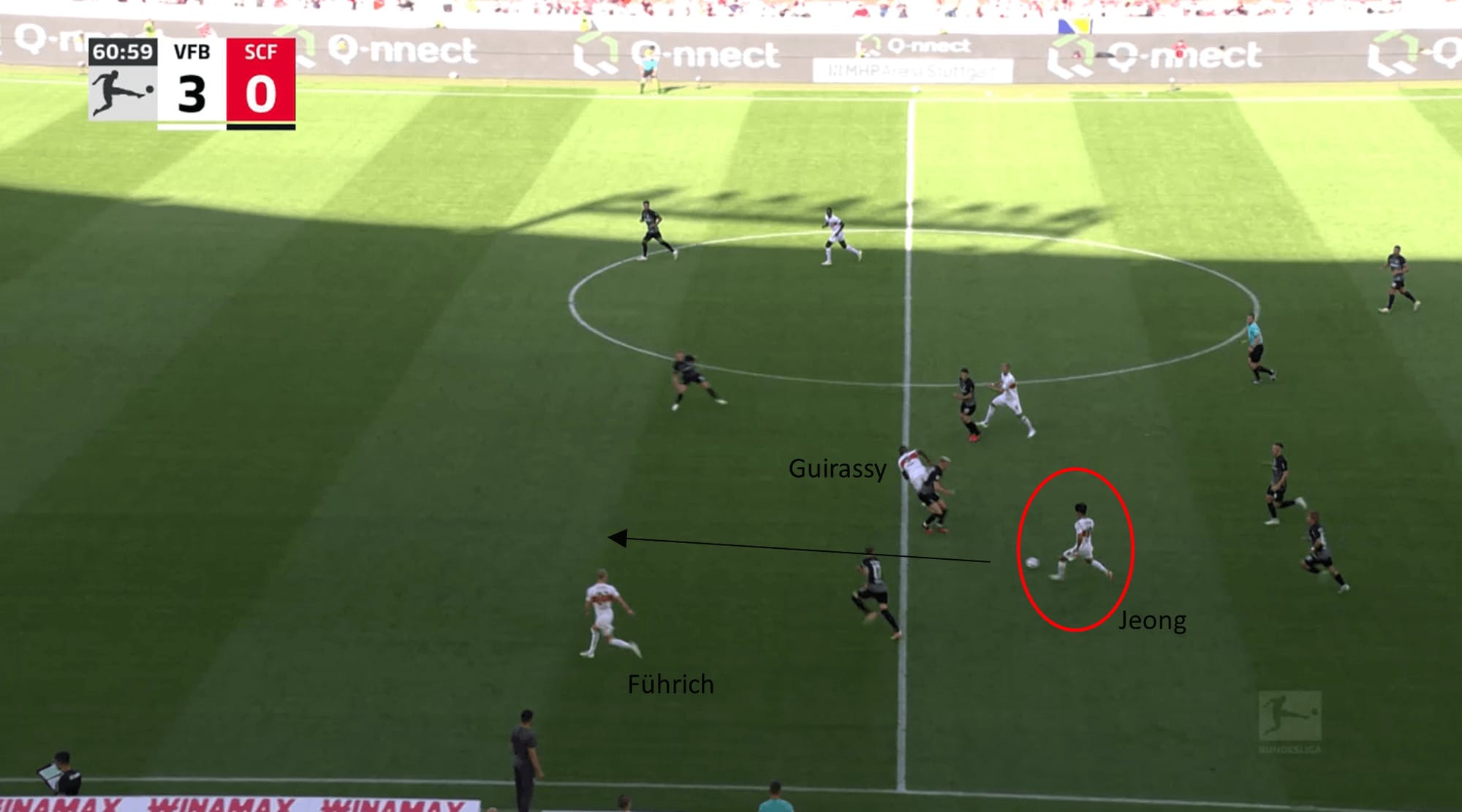
As Guirassy’s movement led to the opposition defender straying from his position, space was created on the left channel for Stuttgart to exploit. Woo-yeong was then able to make a simple pass forward for Chris Führich. Führich subsequently advanced with the ball and scored Stuttgart’s fourth goal of the match.
Playing with his back to goal, as seen in the previous match images, is not uncommon for Guirassy. It is his particular strength, as he is strong in holding off the opposition defence. This positioning can also help him draw in fouls that progress his team up the pitch.
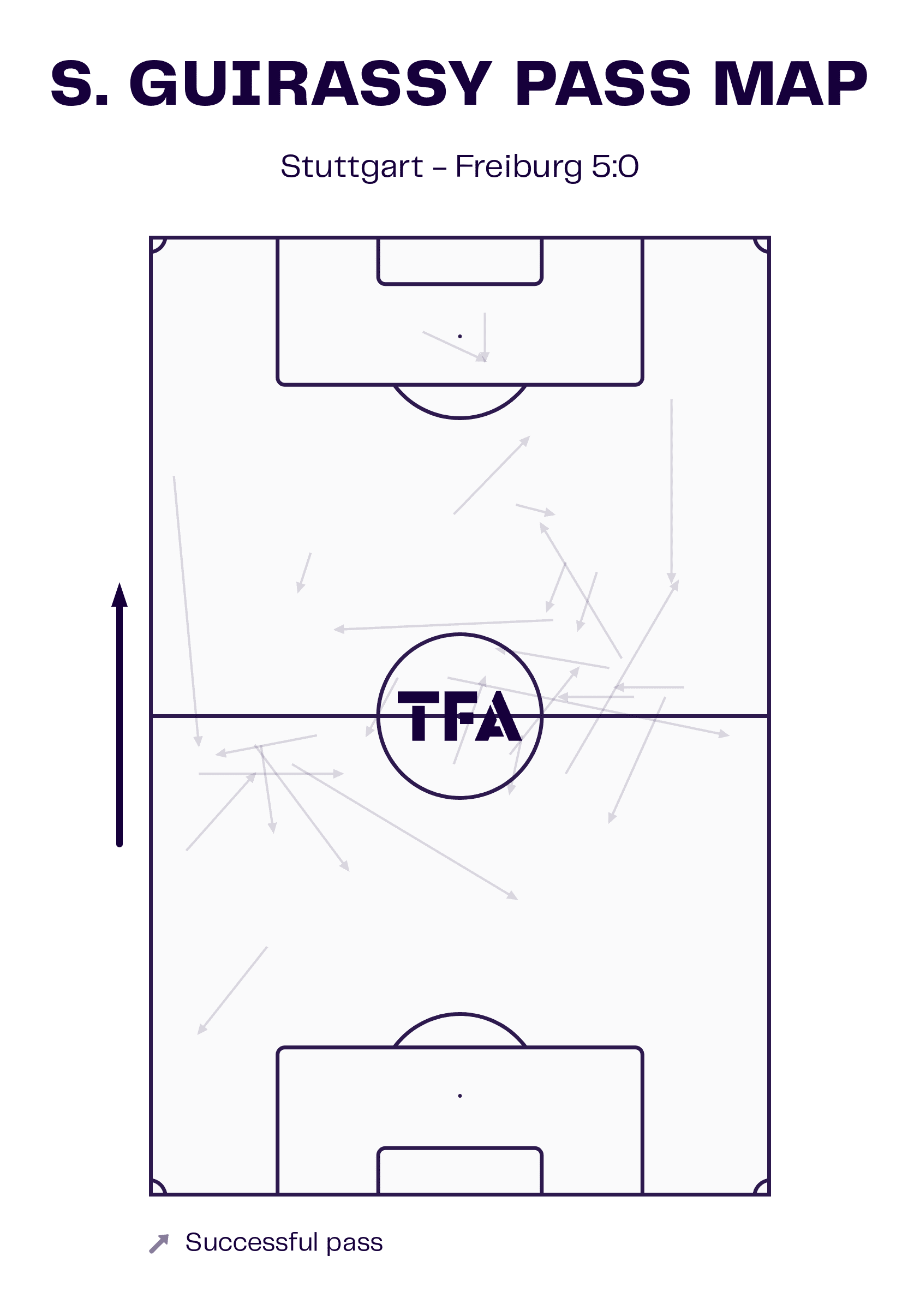
The pass map from the Freiburg match shows that 75% of Guirassy’s passes were played sideways or behind him, in the opposite direction to the attacking goal. A critique of the Guinea international is that he records few assists and progressive passes compared to other forwards in the Bundesliga. He only registered one assist in all competitions last season.
However, as seen from the previous match images, Guirassy did not take the plaudits for the Führich assist, but his initial movement and play ensured the attacking movement progressed. This suggests that Guirassy is progressive in seeing the bigger picture of the attacking outlet rather than being the player to make the literal progressive pass.
More importantly, though, Guirassy is proving to be lethal with his goal return this season. If he continues on his current 1.79 non-penalty goals per 90, he is projected to add a further 55 goals to his current tally and, hence, finish with 60 non-penalty goals in the Bundesliga this season. This would be an unimaginable goal tally, but it does show that he is currently in fine form.
Conclusion
In this tactical analysis, we discussed how Serhou Guirassy developed upon Sebastian Hoeneß’s appointment. In particular, we have shown how the formations set by Hoeneß have played to Guirassy’s strengths, playing with his back to goal and allowing the Guinea forward to link up with the midfield and fellow attackers more expansively. It has been demonstrated that Guirassy has been much more effective under Hoeneß than his predecessors.
This analysis has also demonstrated that since the arrival of the German, Guirassy has grown in confidence and, consequently, has improved his respective scoring rates. If Guirassy can continue his outstanding start to the new season, his value will likely increase. As will his list of admirers across the continent.






Comments